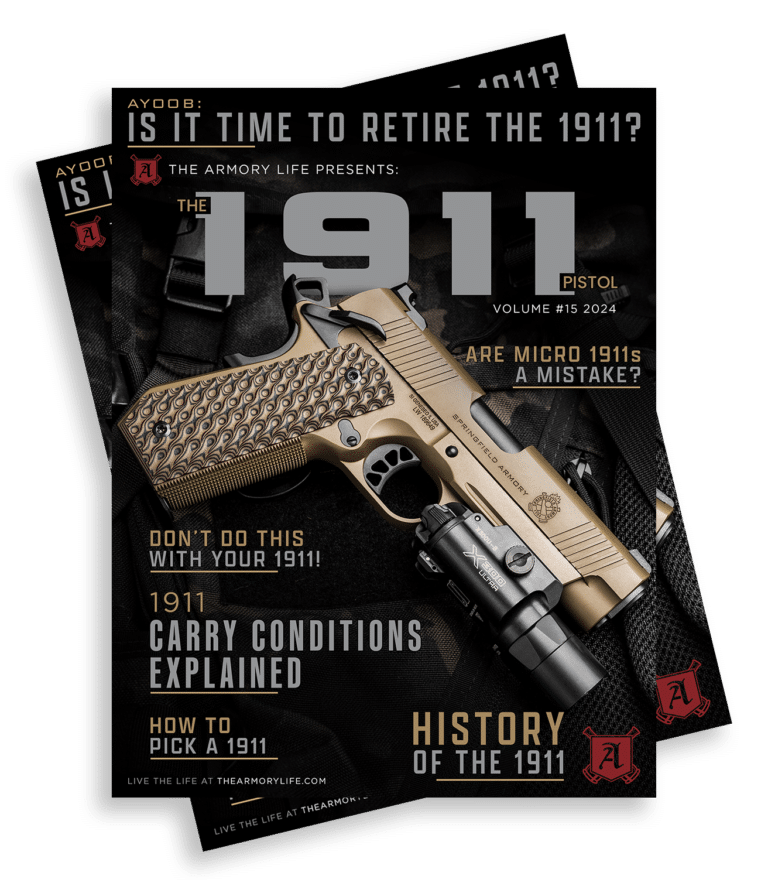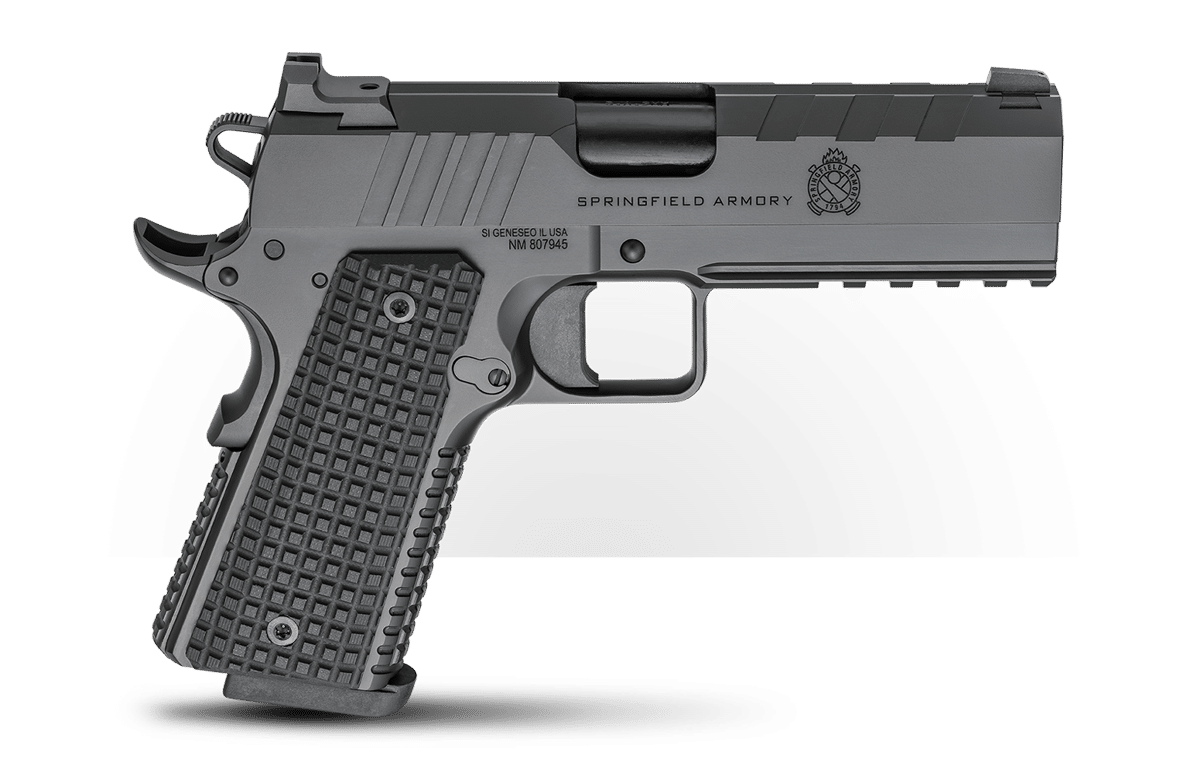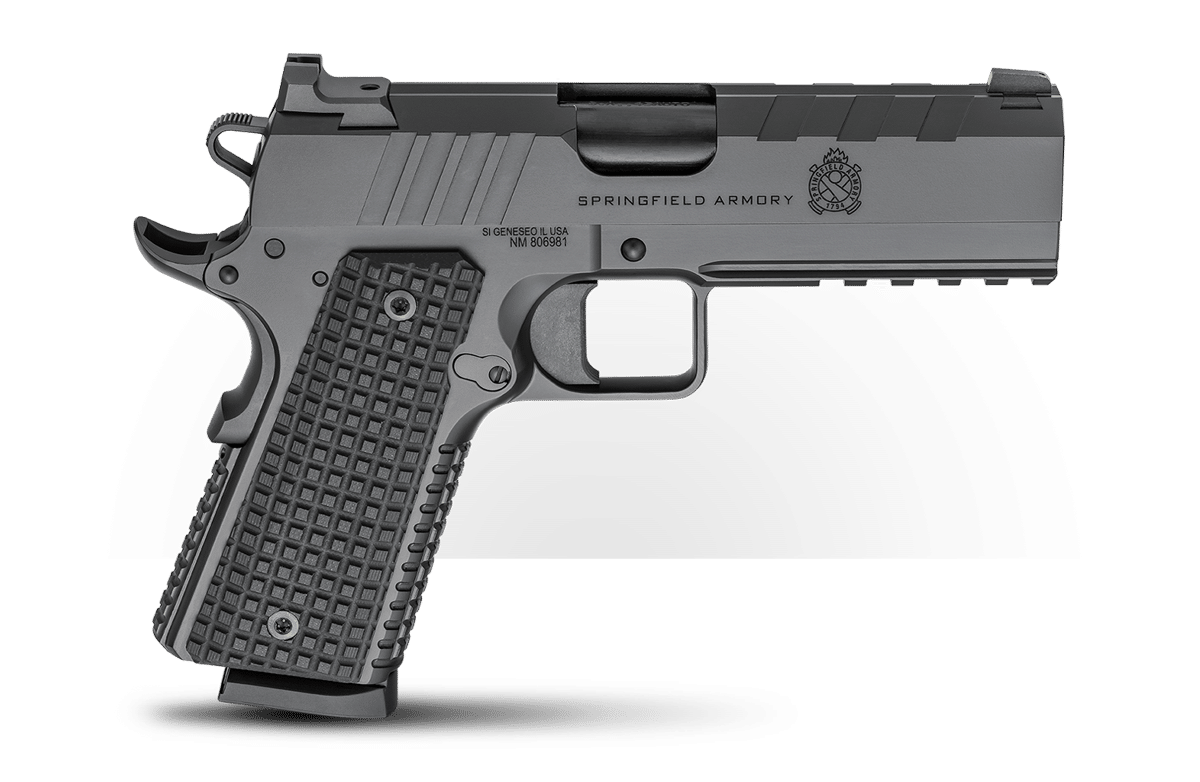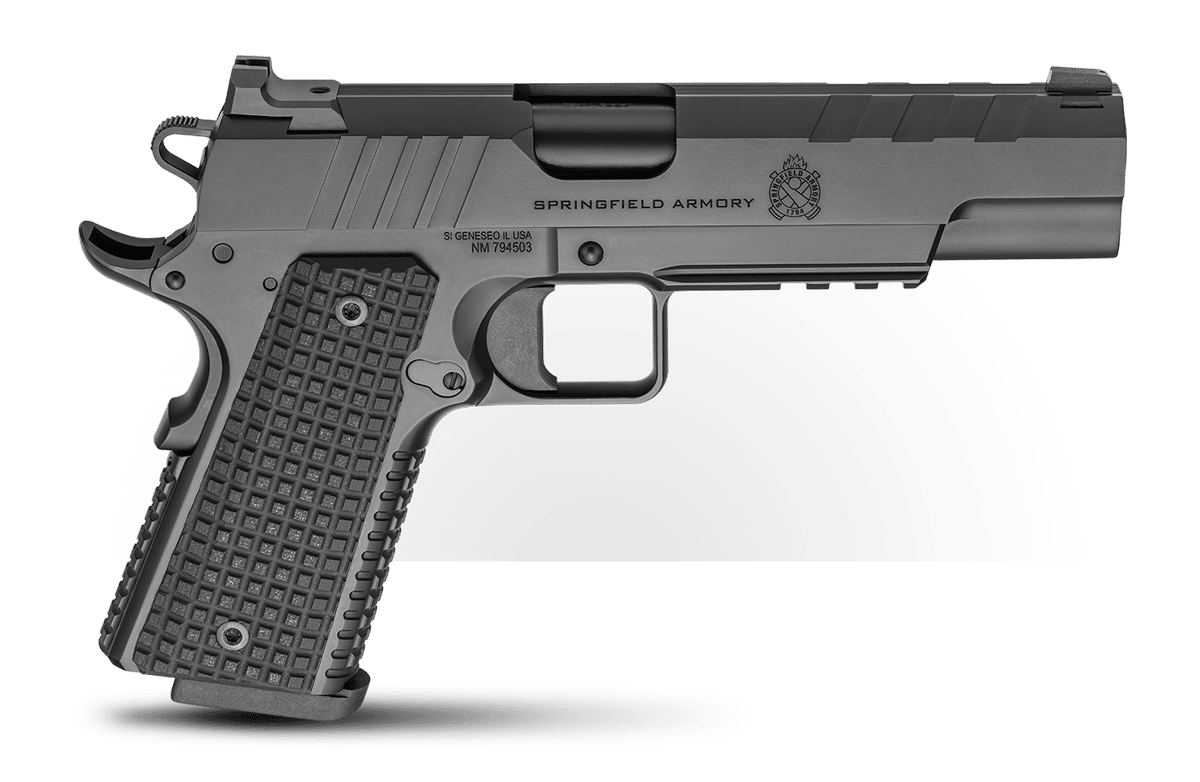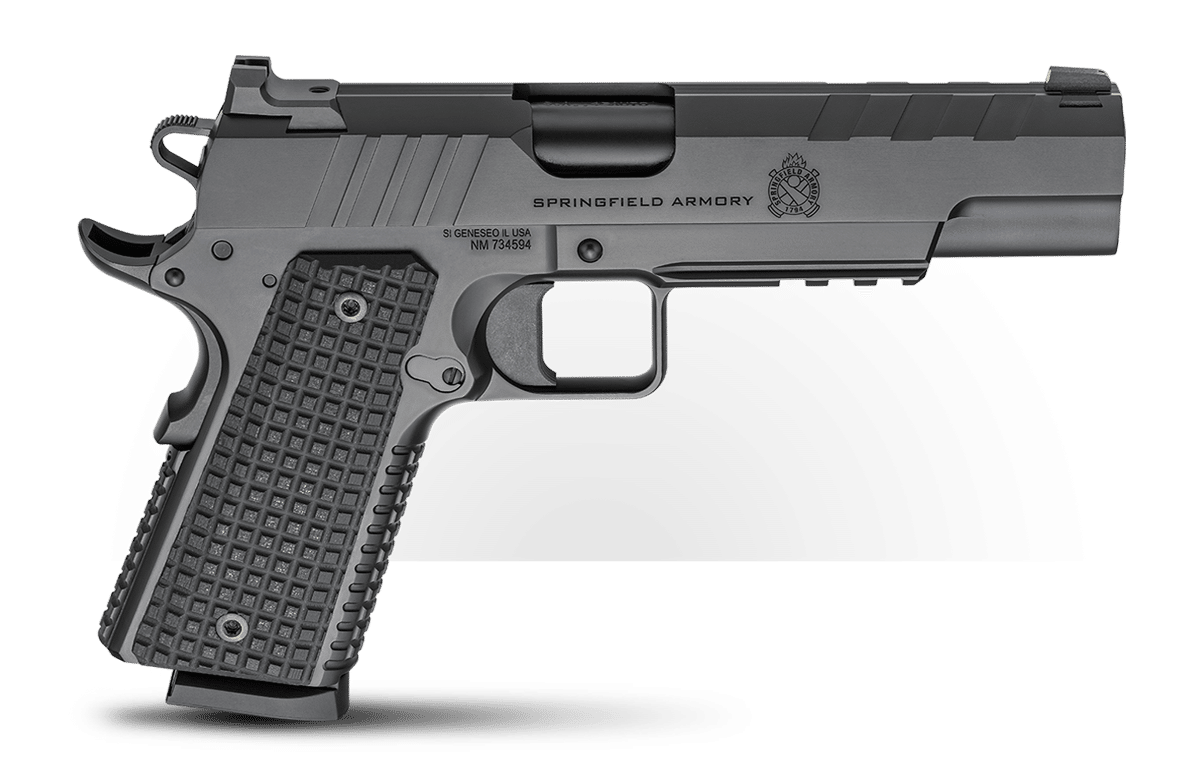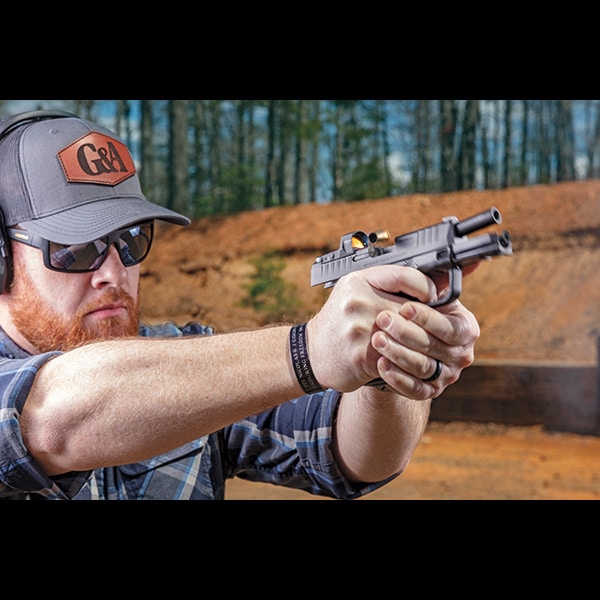In today’s article, Joe Kurtenbach reviews the new all-black Springfield 1911 Emissary pistols. These beauties proved to be quite the shooters. The guns were loaned to the author for this review. Video review by Jeremy Tremp.
Since their 2021 introduction, Springfield Armory’s Emissary 1911s have been some of the most eye-catching pistols in the company’s lineup. That’s saying something considering the catalog includes a wide array of very handsome handguns — I’m personally partial to the walnut-and-steel offerings such as the Professional 1911 and the Springfield SA-35.
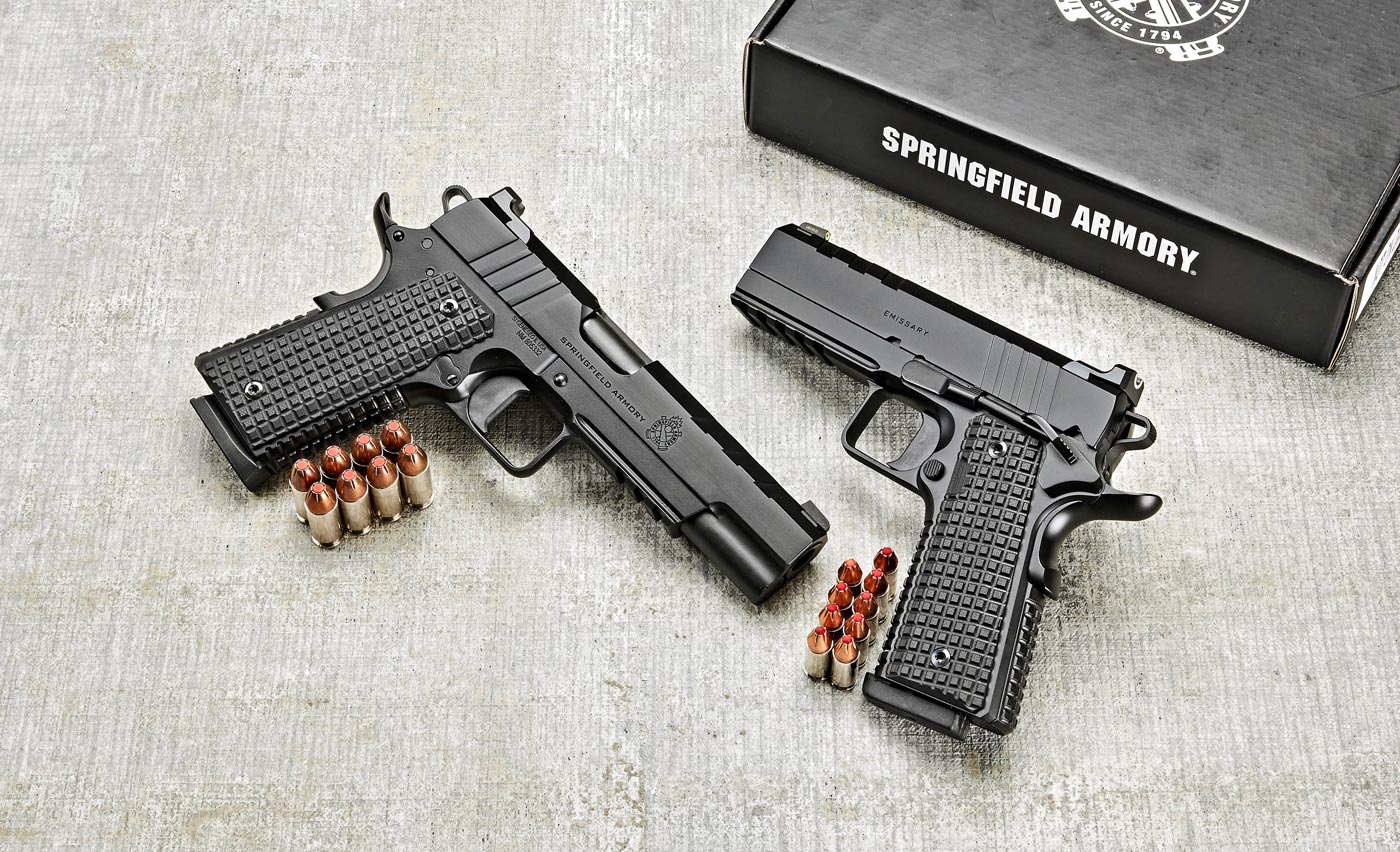
Unlike those classic beauties, the Emissary aesthetic was both appealing and distinct because it eschewed the traditional in favor of the modern, yet still evoked nostalgia with some retro-custom touches.
The Emissary pistols also walked the walk in terms of performance and were acclaimed for looking good and shooting better. As with all Springfield 1911s, the bones were good. The slides, frames and barrels were all made from forged steel. Still, the appearance, construction and inherent accuracy all suggested that the Emissary represented a higher standard for a production-grade pistol.
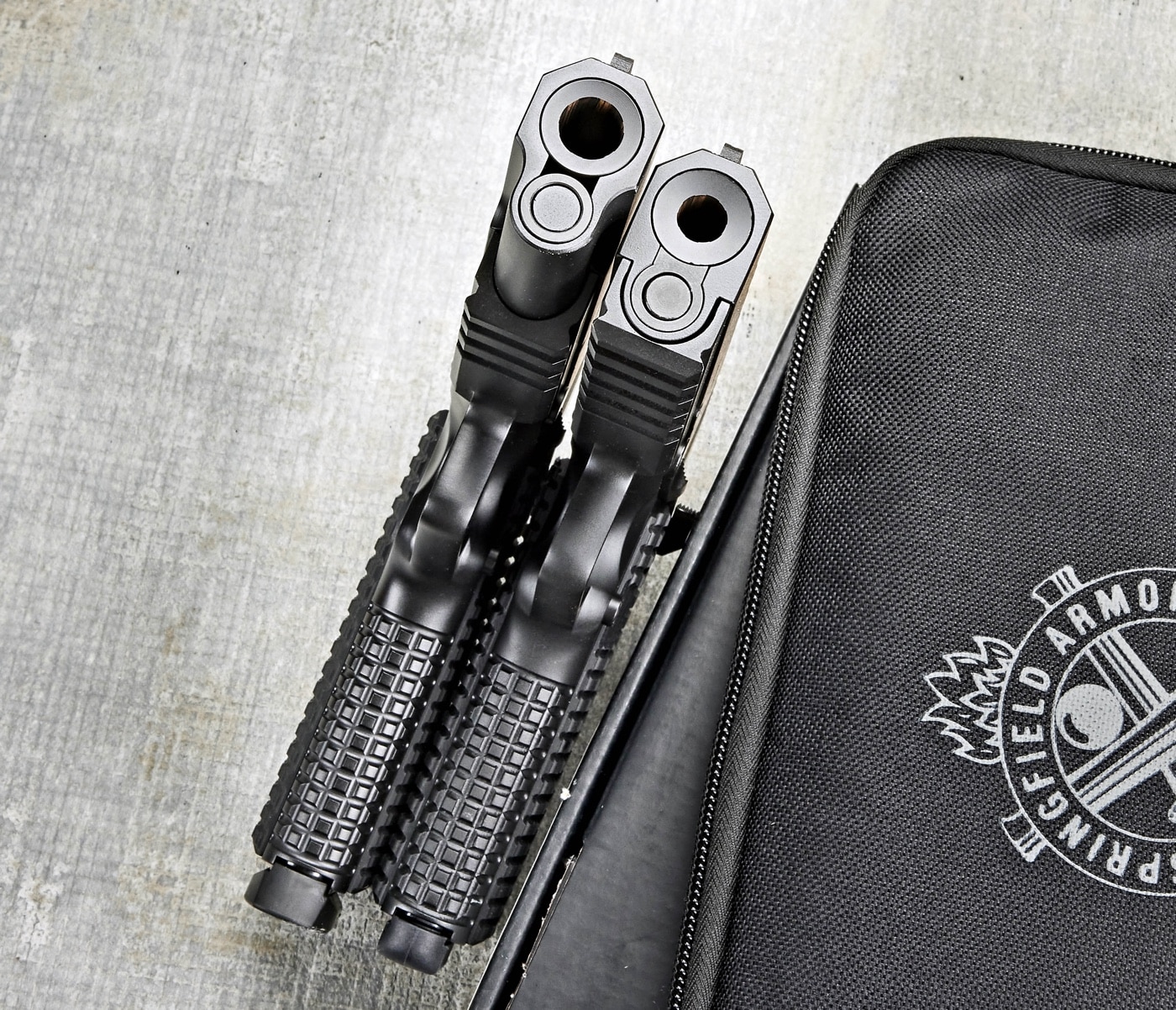
Now, the latest Emissary 1911s can be had clad in a businesslike Cerakote finish. Rather than muting their personality, if anything the all-black guns look even better. The dark motif seemingly sharpens the edge on these deadly serious fighting irons.
What Remains
Existing in Springfield Armory’s extensive 1911 lineup, the Emissary is a single-action, hammer-fired, semiautomatic pistol. Current models are chambered for John Browning’s classic .45 ACP cartridge or the now-ubiquitous self-defense standard, 9mm Luger. The guns feed from single-stack detachable box magazines and come with two 8- or 9-round-capacity mags, respectively. The Emissary was originally introduced as a full-size pistol with a 5” barrel, but Springfield has since expanded the family to include a smaller, EDC-capable 4.25” configuration for both chamberings.
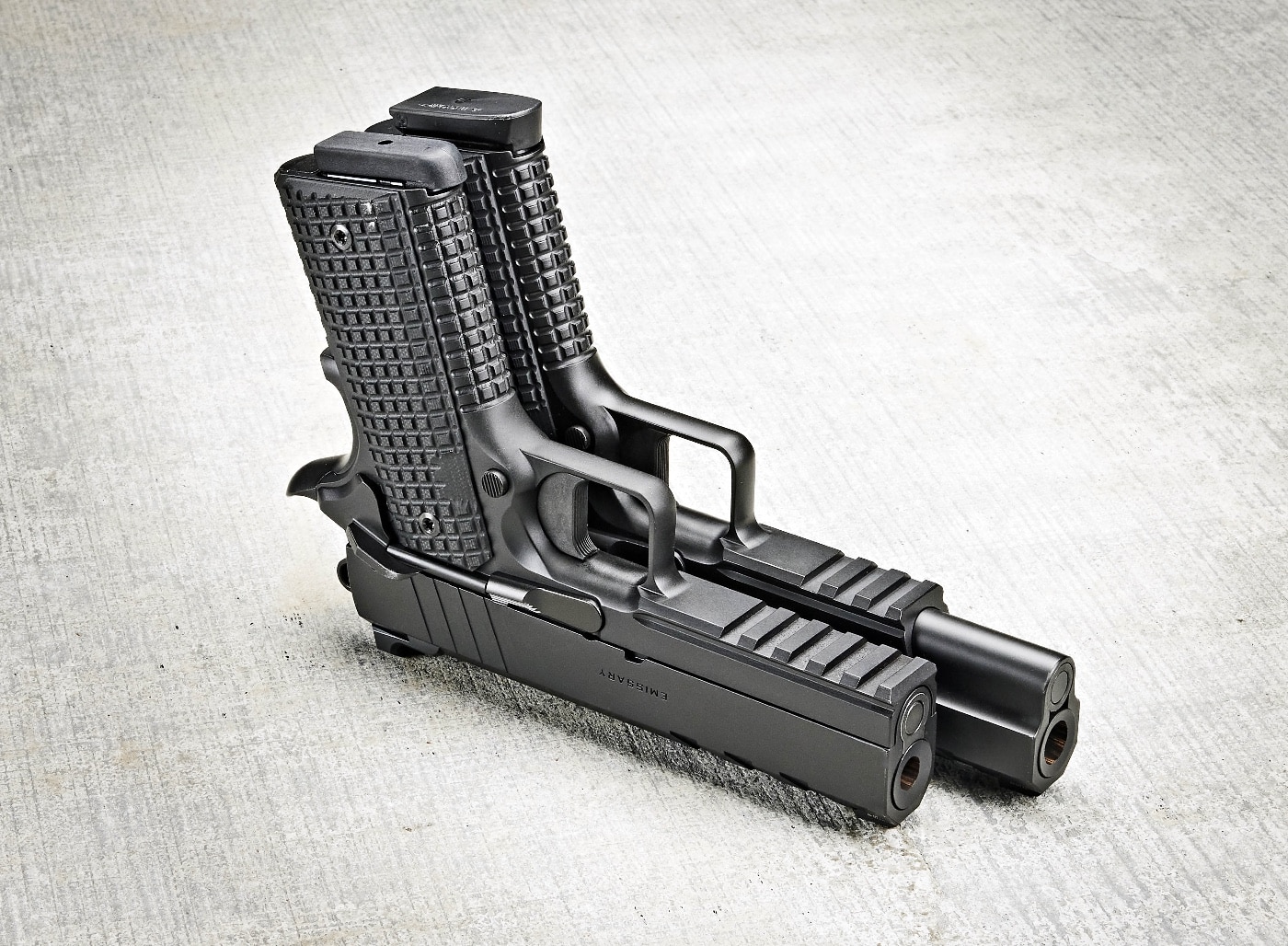
The Emissary’s unique design utilizes modern manufacturing and machining techniques to achieve functional and aesthetic features that harken back to hand-modified 1911s of the 1980s and ’90s. Add to the mix some in-demand upgrades, and the Emissary’s appeal becomes evident.
Starting with the slide, the angular tri-top design replaces the assembly’s usual rounded top with three faces above the flats. Springfield puts these areas to use, adding wide, lug-like forward cocking serrations to the inclined surfaces, and lengthwise 40-line-per-inch serrations between the sights.
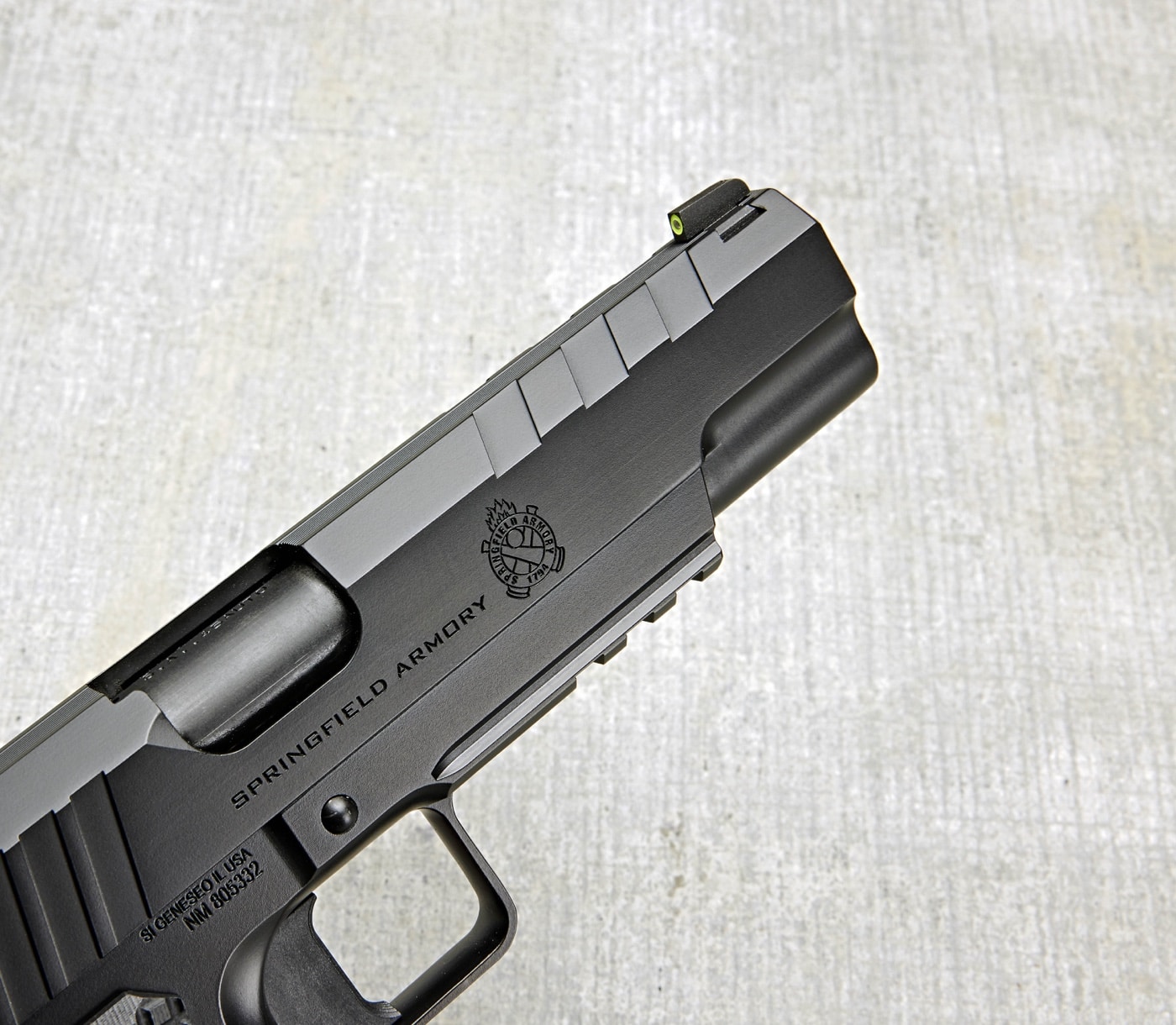
Stippling and topside slide serrations have long been popular among competition shooters because they help reduce glare and guide the eyes forward to the front sight. However, such enhancements required the time and talents of a custom gunsmith. The upgrade comes standard on the Emissary, as do the Tactical Rack U-notch rear sight and the tritium-powered, luminescent front dot.
Looking at the barrel assembly, here again the Emissary deviates from traditional design. The bushingless assembly relies on heavy-profile bull barrel to engage the slide and achieve lockup. The Emissary also uses a full-length guide rod to support the recoil spring. The arrangement adds to the pistol’s distinct appearance, and the heavy barrel’s added weight near the front of the gun can help combat muzzle rise during recoil.
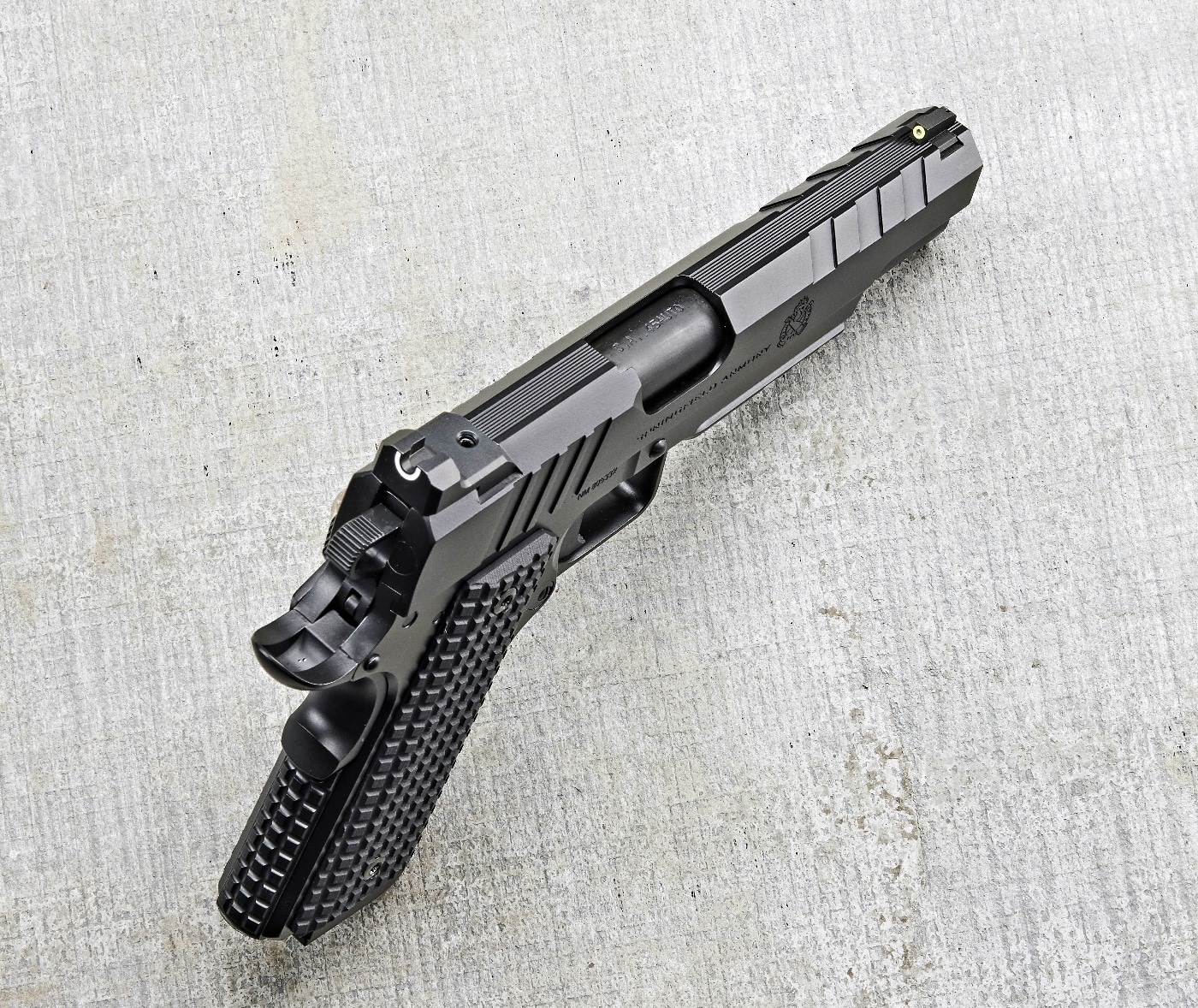
Users should note that taking down the Emissary for maintenance does require a tool for capturing the recoil spring during disassembly. Although the process differs from traditional 1911s, many will recognize that Springfield Armory’s EMP line, and many compact 1911s from various makers, utilize similar arrangements.
The provided tool looks like a very thin Allen-wrench and the short end is simply inserted into a port on the full-length guide rod when the slide is retracted. Doing so secures the spring so that the recoil assembly can be removed as one piece from the slide. If for some reason you lose or break the tool, never fear, a bent paper clip will do the job, too.
Moving down to the frame, some of the Emissary’s vintage inspirations really come to light. The squared triggerguard is both niche and classic — it certainly recalls a specific era of custom gun builds. And, although we now take accessory rails for granted, adding attachment slots to a pistol’s dustcover was another gunsmith specialty. Both those components, in the days of yore, were separate pieces of metal that had to be firmly affixed to the frame and then blended for a unified appearance.
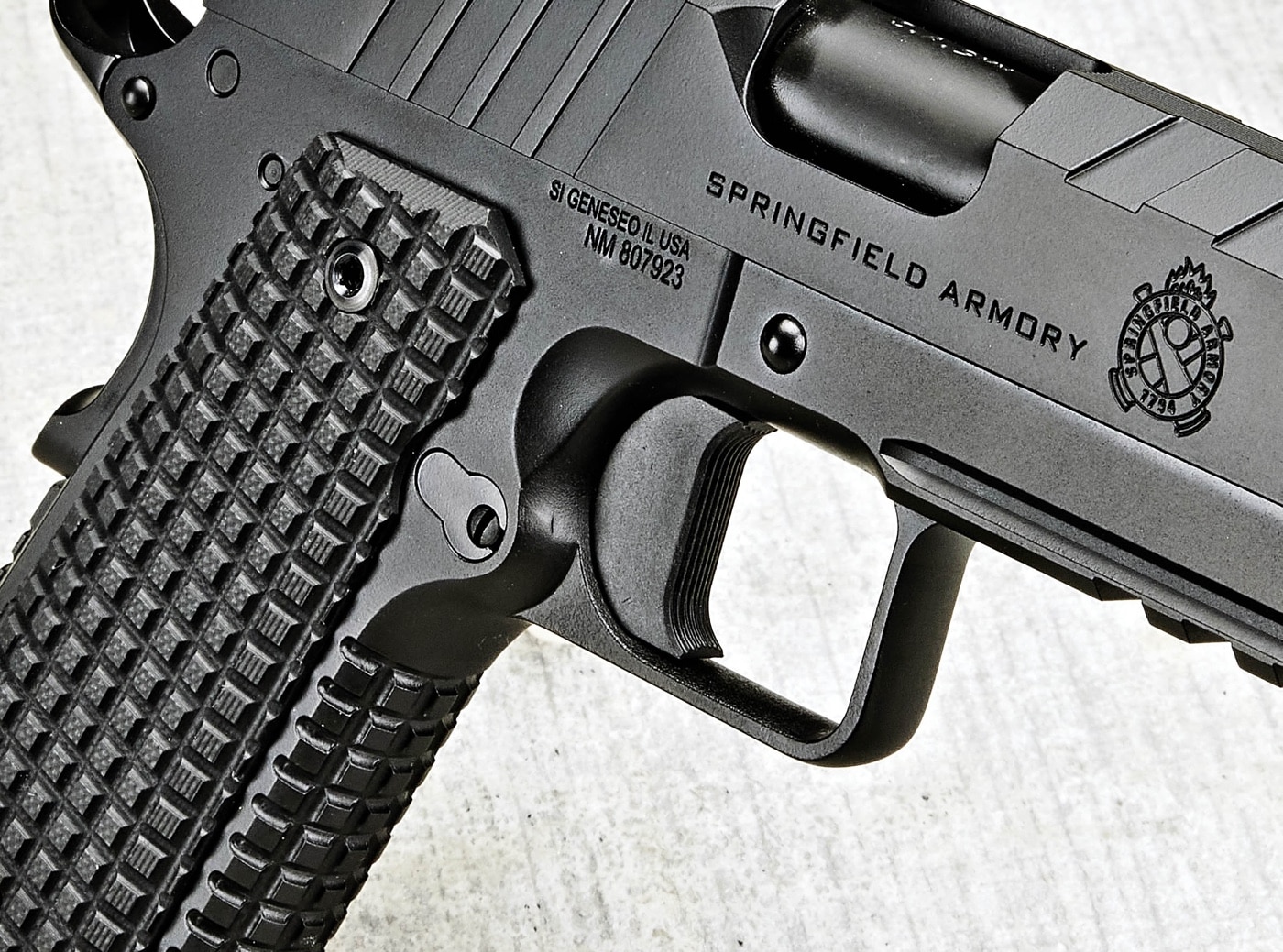
Today, Springfield Armory’s Emissary forgings include both features from the start, and normal machining operations are all that’s needed to bring the frame to fruition. The primary benefit of modern manufacturing is durability. A frame made from one solid piece of metal is far stronger than the welds and screws previously required to achieve those features.
In terms of texture, the Emissary’s frame receives a machined treatment with grooves and knobs reminiscent of the old Mark 2 “pineapple” grenades. It is an effective design for ensuring solid purchase on the gun, and the pattern is carried on through the thinline G10 stocks. Whereas traditional wood and bone 1911 stocks tended to be larger and rounder — both for feel and to ensure the durability of the panels — modern G10 is quite strong and easy to work with, even in thinner and flatter components.
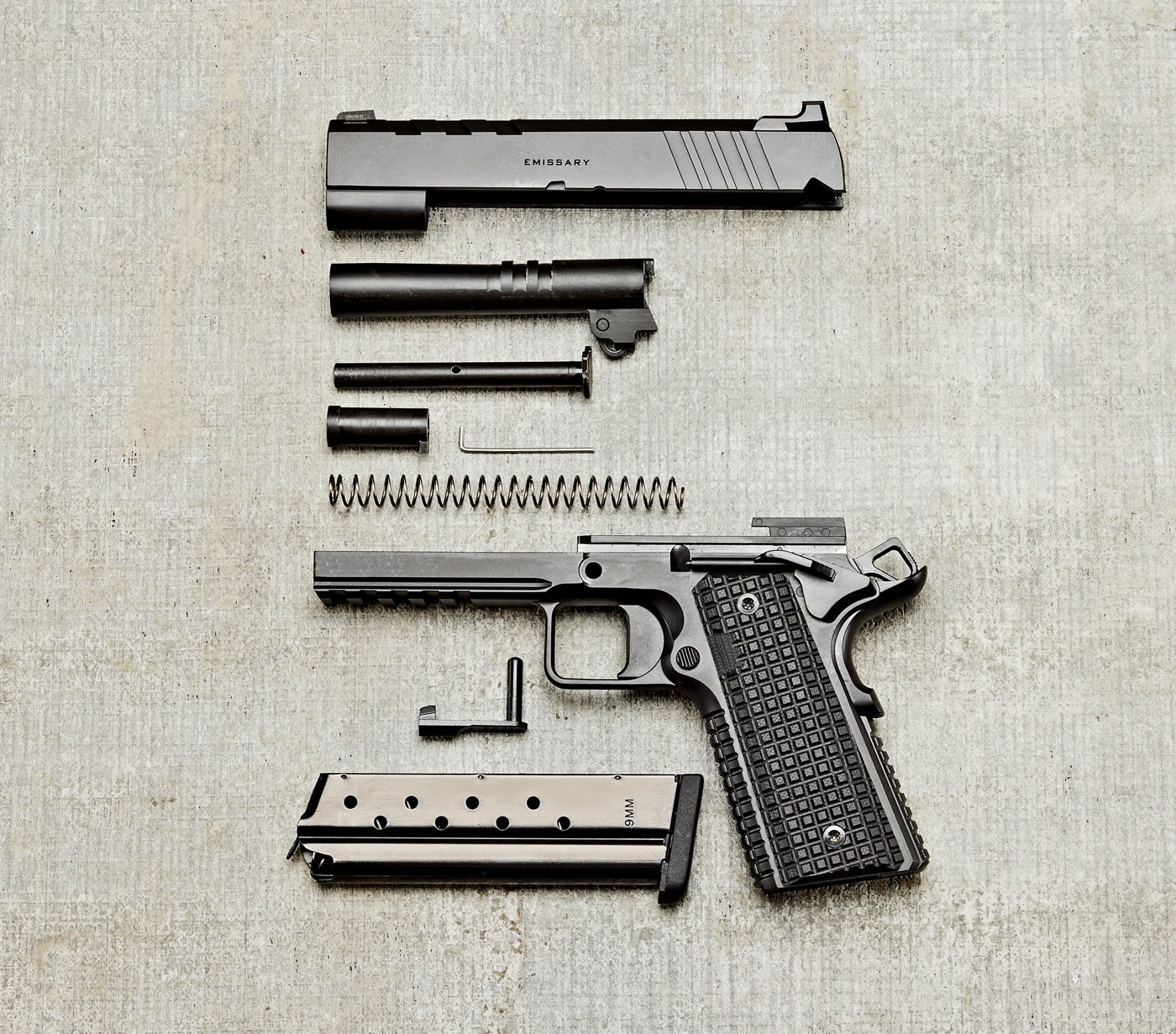
The thinline stocks also reduce the grip’s overall diameter, and many shooters find they make it easier to reach the trigger and magazine release. Speaking of, the trigger is a solid flat-faced unit and the magazine release is serrated on its face. The rear grip safety, left-side thumb safety, and slide lock/release round out the standard 1911 controls.
How Things Change
There were two important changes made for the new black Emissaries, and the first one is obvious. Replacing the two-tone look of the original — blued slide over stainless frame –Springfield is finishing the new models all in black. Durable Cerakote is being applied to the carbon steel slide, stainless steel frame, and stainless barrel. All of the small parts, too, wear a black finish, and black G10 stocks replace the original’s black-gray hues. For folks like me that view guns as tools first, it is a very attractive and professional appearance.
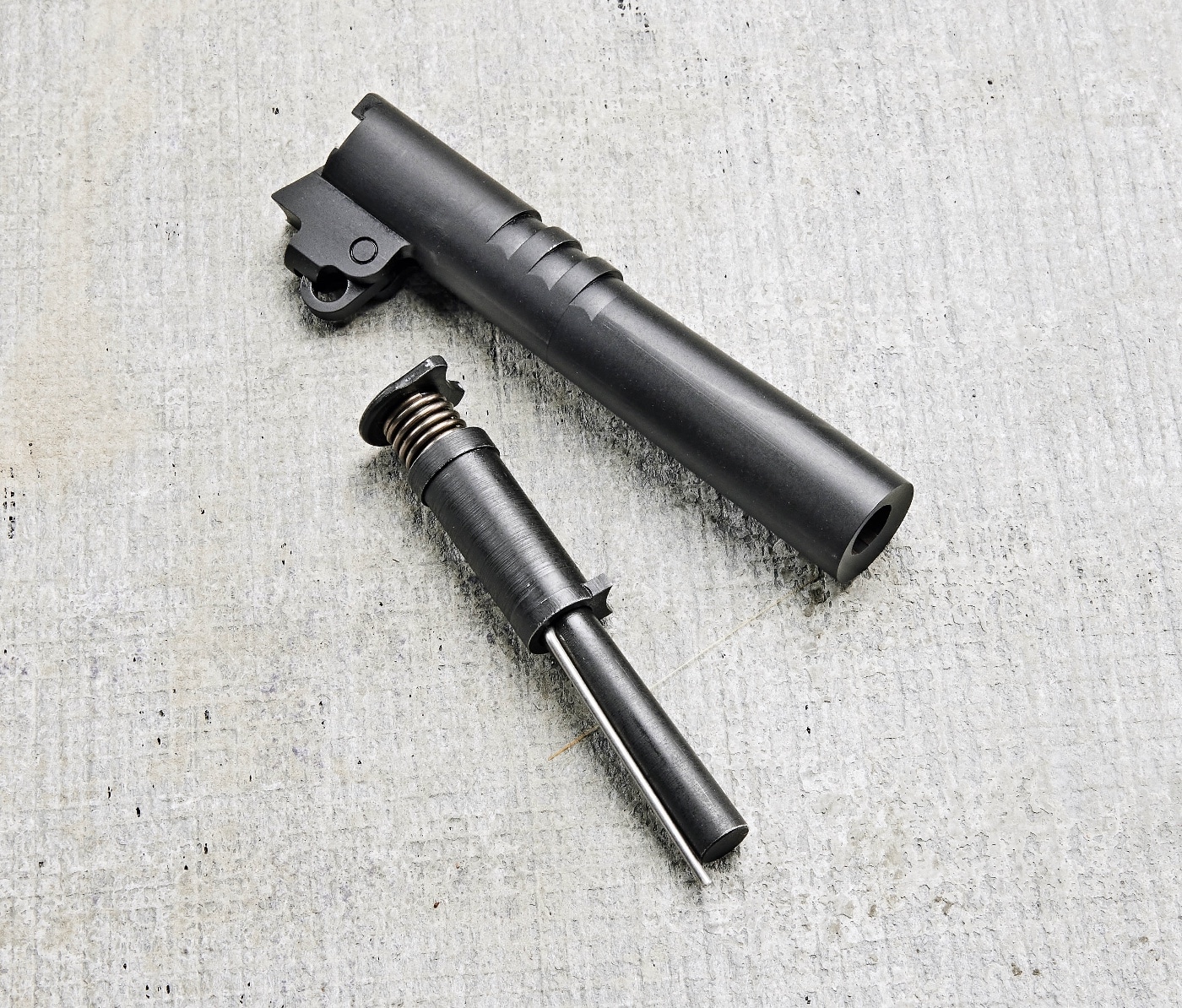
Looks aren’t everything, though, and the latest Emissary models also offer one functional upgrade. Whereas the original 4.25” models lacked the Picatinny rail of their larger siblings, the newest additions all come accessory-rail equipped. In fact, the blacked-out 4.25” models sport full-length dustcovers and rails which, combined with the triggerguard and tri-top slide, give the guns even more angles and an almost squared-off snout. Not only is it a cool look, it expands the series to include a light- or laser-compatible compact and adds still more material, and weight, near the muzzle to aid recoil management.
Tested
To wring out the new Emissaries, a brace of pistols was ordered in for evaluation. The first was a full-size 5” Emissary in .45 ACP while the second was a 4.25” model in 9mm. Upon opening the boxes, I gave the guns a quick wipe down and lube. I recommend this practice for all new pistols, but especially all-metal guns. There is a big difference between protective packing grease and lubricating gun oil — you’ll want to clean off the former, first, and then apply the latter to any metal-on-metal contact points.
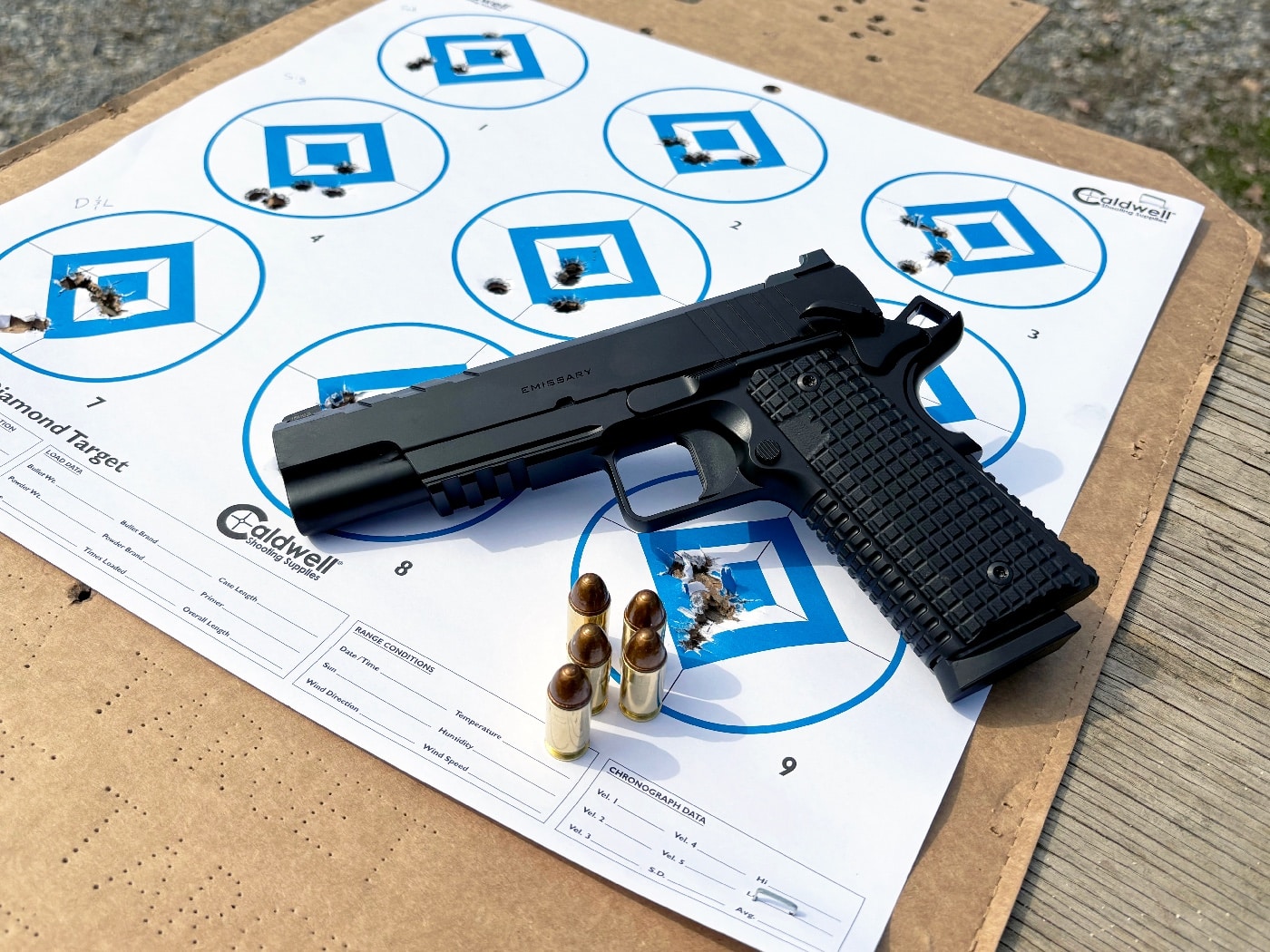
Once the guns were ready, I was off to the range. As is my custom, familiarization fire was conducted with a mix of ammunition compromising different load types from varied makers. For one, this is a great way to use up “leftover” ammo from previous tests. As well, it’s an effective method for determining if a gun has a particular preference, or aversion, for certain bullet weights and profiles. The Emissaries did not. Function was 100 percent, and I noted that the 9mm 4.25” pistol was particularly smooth-cycling even with heavier bullets and +P loadings.
| .45 ACP Loads | Velocity | Energy | Best Group | Avg. Group |
|---|---|---|---|---|
| D&L Sport 200-gr. GSP | 891 fps | 353 ft-lbs | 0.99″ | 1.30″ |
| Federal Punch 230-gr. JHP | 905 fps | 418 ft-lbs | 1.31″ | 1.49″ |
| Hornady American Gunner 185-gr. XTP | 948 fps | 369 ft-lbs | 1.29″ | 1.42″ |
Moving on to the accuracy portion, I set my targets up at 15 yards and established a good rest with sandbags on a range bench. For the .45, I selected Federal Punch 230-gr. JHP load and the 200-gr. General Service Pistol (GSP) load from D&L Sports. The averages for three, five-shot groups were excellent across the board: 1.49” and 1.3”, respectively. The round-nose, semi-wadcutter load from D&L not only had the best average, it also posted the best group of the day, 0.99”. Not bad considering the pistol’s combat-style iron sights.
| 9mm Loads | Velocity | Energy | Best Group | Avg. Group |
|---|---|---|---|---|
| Armscor 124-gr. FMJ | 1,086 fps | 325 ft-lbs | 1.66″ | 1.91″ |
| Remington HTP 115-gr. JHP | 1,131 fps | 327 ft-lbs | 1.34″ | 1.69″ |
| Winchester Defend 147-gr. JHP | 989 fps | 319 ft-lbs | 1.72″ | 1.86″ |
In 9mm, I tested the Emissary with Armscor 124-gr. FMJ, Winchester Defend 147-gr. JHP, and Remington High Terminal Performance (HTP) 115-gr. JHP. Group sizes were a bit larger, averaging 1.91”, 1.86”, and 1.69”, respectively. I credit the difference to the shorter sight radius of the 4.25” pistol, but both guns performed very well, regardless.
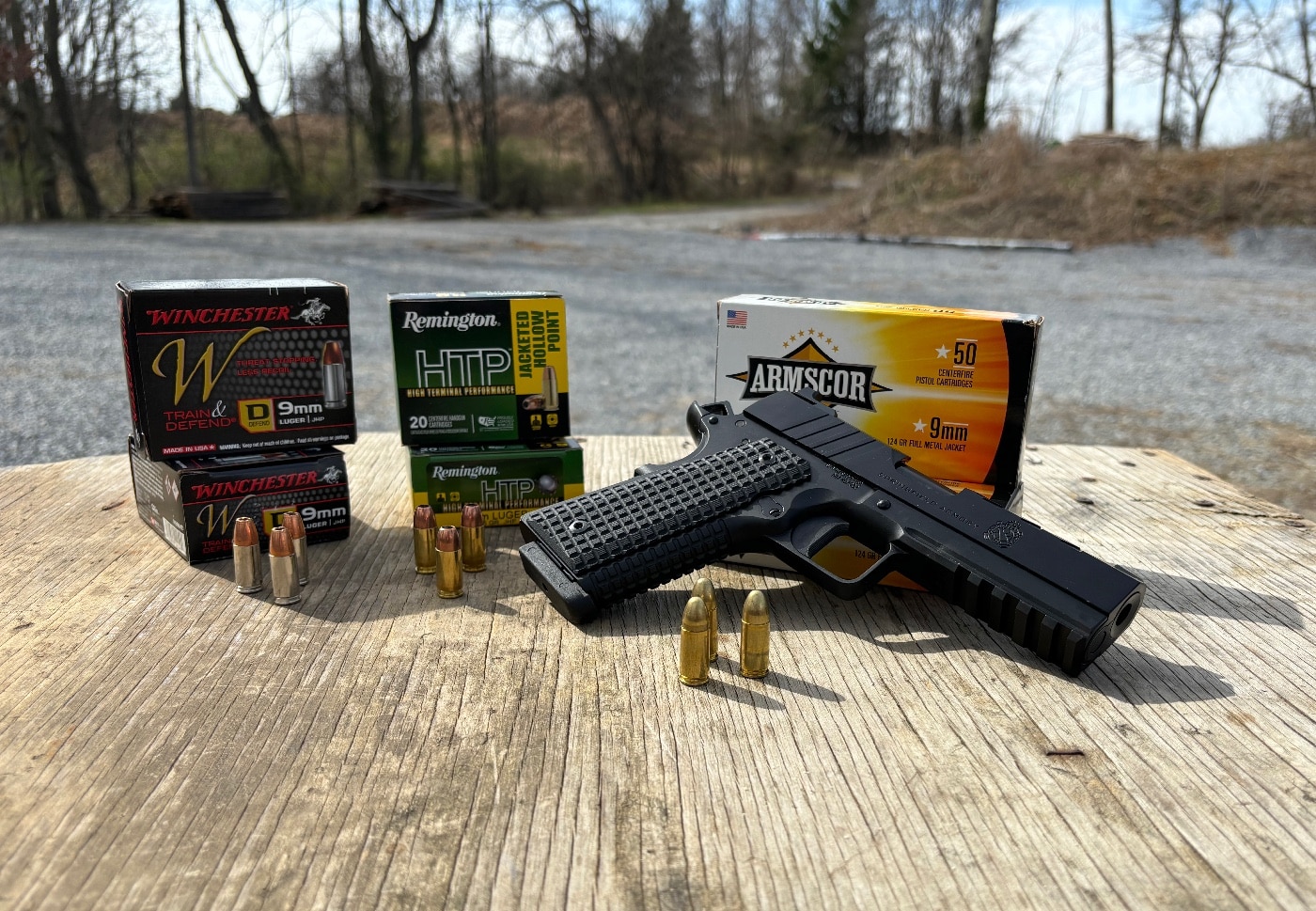
Moving on to defensive drills, I really started to find my groove with the smaller pistol. Don’t get me wrong, the full-size .45 is a fine example of the breed. And, while .45s are always going to be hammers, the Emissary did a great job soaking up the recoil and was very comfortable in hand even after a couple hundred rounds of shooting.
But, the 4.25” 9mm was special. The slide-to-frame fit was glass smooth and there is nothing like shooting 9mm from a hefty metal pistol — at 42 oz. with an empty magazine, the “smaller” Emissary really is a tank. The gun hardly moved during recoil, which allowed me to easily track the bright yellow front sight and make fast follow-on shots. I ran Bill Drills, Failure Drills, and other pistol drills until the ammo started running low. It was a heck of a good time.
Final Observance
For any of the Emissary pistols, because of their square triggerguards, holster fit is going to be a consideration for those who want to carry or compete with the guns. However, thanks to the accessory rails on both 5” and 4.25” all-black models, semi-universal light-bearing rigs may make the holster search much easier.
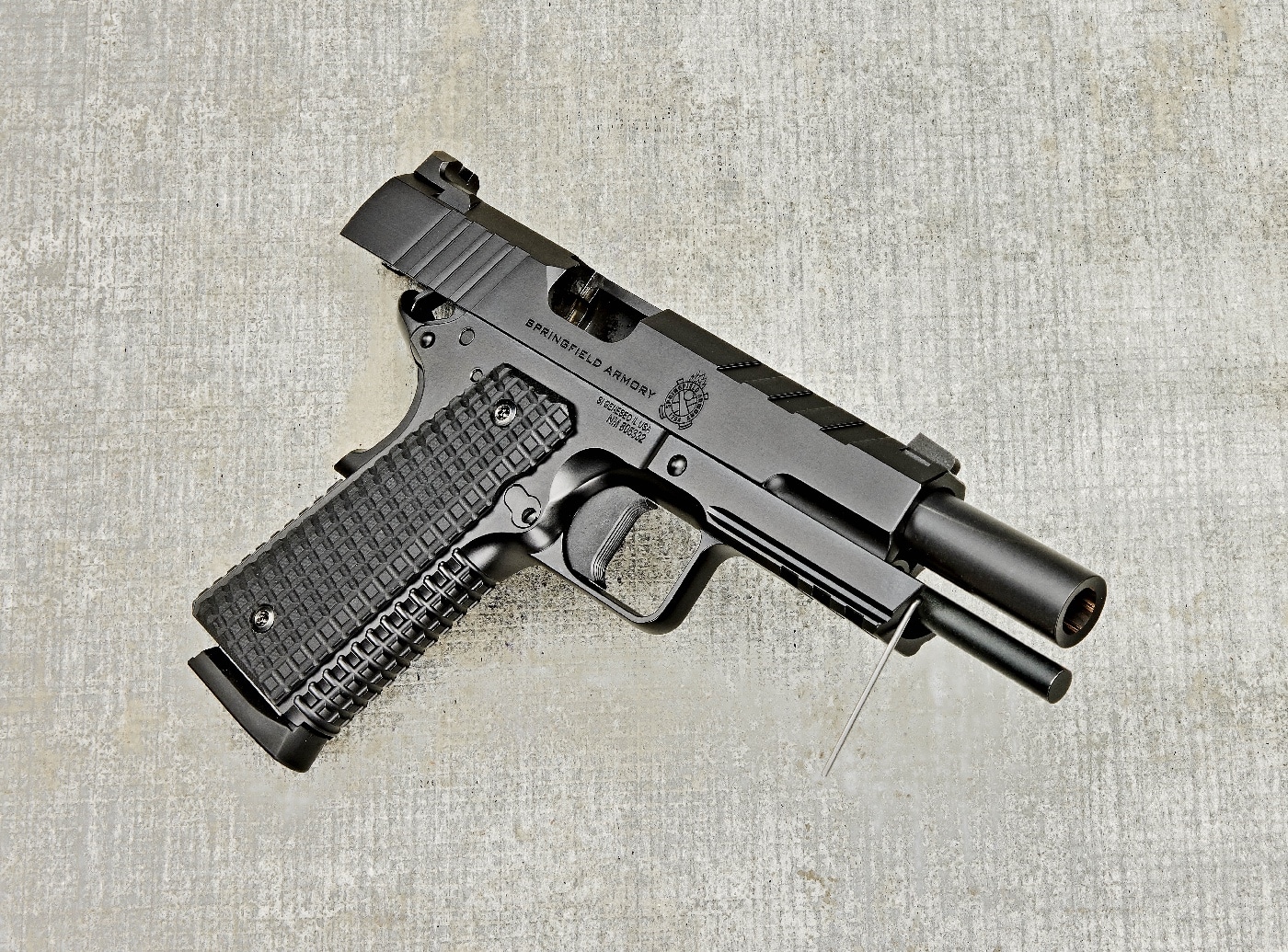
Overall, I was impressed by both the build quality and the downrange performance of my test pistols. But, let’s face it, everyone has their own preferences when it comes to the look and feature sets of different handguns, particularly when it comes to the self-defense firearms that become our constant companions. So, while I appreciated the Emissary’s characteristics, the original styling was a touch showy for my taste. The new black finish, on the other hand, really speaks to me. The guns now offer both the capability and appearance I expect from professional-grade lifesaving tools. To prevail in situations dark and dire, I wouldn’t hesitate to rely on the all-black Emissary 1911.
Editor’s Note: Please be sure to check out The Armory Life Forum, where you can comment about our daily articles, as well as just talk guns and gear. Click the “Go To Forum Thread” link below to jump in!
Join the Discussion
Featured in this video
Continue Reading
Did you enjoy this video?

 220
220




